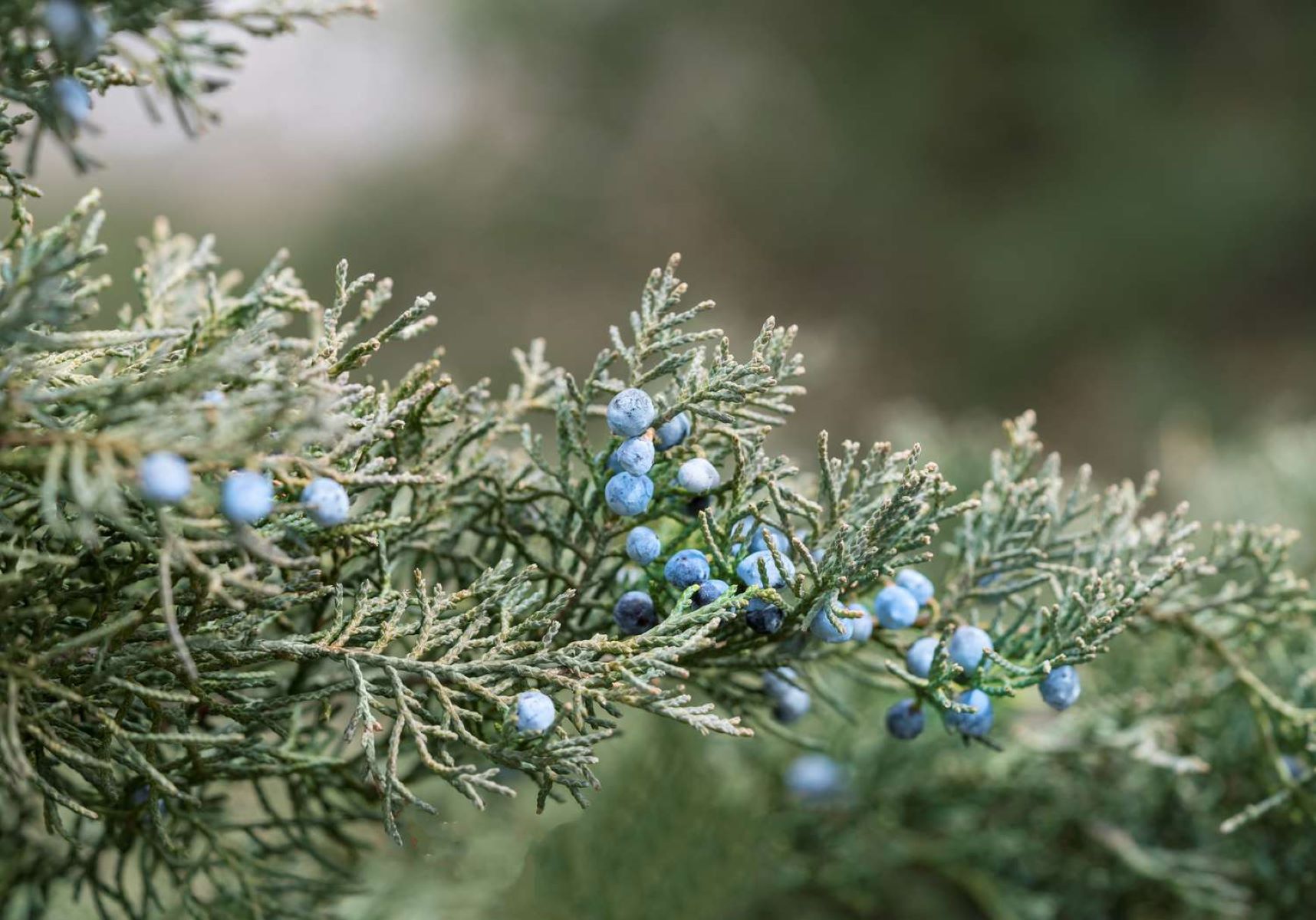Home>Environment>The Surprising Truth: Junipers Vs. Cedars – What You Need To Know!


Environment
The Surprising Truth: Junipers Vs. Cedars – What You Need To Know!
Published: February 11, 2024
Discover the environmental impact of junipers and cedars. Learn the surprising truth and make informed choices for a sustainable future.
(Many of the links in this article redirect to a specific reviewed product. Your purchase of these products through affiliate links helps to generate commission for Regretless.com, at no extra cost. Learn more)
Table of Contents
Introduction
When it comes to landscaping and adding greenery to your outdoor space, junipers and cedars are two popular choices that often spark debates among gardening enthusiasts. These evergreen plants not only provide aesthetic appeal but also serve practical purposes in various landscapes. Understanding the differences and similarities between junipers and cedars, as well as their unique growing conditions and uses, is essential for making informed decisions when incorporating them into your outdoor environment.
In this comprehensive guide, we will delve into the intriguing world of junipers and cedars, exploring their distinct characteristics, growing requirements, and practical applications. Whether you're a seasoned gardener or a novice enthusiast, this exploration will equip you with valuable insights into these versatile plants, empowering you to make informed choices for your outdoor spaces. So, let's embark on this horticultural journey to unravel the surprising truths about junipers and cedars, and discover what you need to know to elevate your green thumb prowess!
What Are Junipers and Cedars?
Junipers and cedars are both evergreen plants that belong to the Cupressaceae family. Despite their similar evergreen nature, they are distinct in their characteristics and uses.
Junipers are coniferous plants known for their needle-like leaves and small, berry-like cones. They are highly adaptable and can thrive in various climates and soil conditions. With over 50 species, junipers come in a wide range of shapes and sizes, from low-growing ground covers to tall, upright shrubs. Their foliage can exhibit different shades of green, blue, or even gold, adding diversity to any landscape.
On the other hand, cedars are also conifers with scale-like leaves arranged in an overlapping pattern. Unlike junipers, cedars produce larger, woody cones. They are often characterized by their aromatic wood and are commonly used for ornamental purposes and timber production. The most well-known species of cedar include the Eastern Red Cedar and the Western Red Cedar, both of which are valued for their wood quality and natural beauty.
In summary, junipers and cedars are both beloved for their evergreen nature and unique visual appeal. While junipers are prized for their diverse foliage and adaptability, cedars stand out for their aromatic wood and larger cones. Understanding the distinct features of these plants sets the stage for exploring their differences and similarities, which we will delve into next.
Differences Between Junipers and Cedars
When comparing junipers and cedars, several key differences set them apart, ranging from their physical attributes to their preferred growing conditions and uses. Understanding these distinctions is crucial for anyone seeking to incorporate these plants into their outdoor environment effectively.
Foliage and Cones:
One of the most prominent differences between junipers and cedars lies in their foliage and cones. Junipers boast needle-like leaves that can range in color from vibrant green to silvery blue, providing a diverse visual spectrum. In contrast, cedars feature scale-like leaves arranged in an overlapping fashion, contributing to their distinct appearance. Furthermore, junipers produce small, berry-like cones, while cedars are known for their larger, woody cones, setting them apart in terms of reproductive structures.
Size and Growth Habits:
In terms of size and growth habits, junipers and cedars exhibit notable differences. Junipers encompass a wide range of species, including low-growing ground covers and tall, upright shrubs, providing versatility in landscaping. Their growth habits can vary from spreading horizontally to growing vertically, catering to different aesthetic and functional needs. Conversely, cedars are often characterized by their larger size and upright growth, making them ideal for creating privacy screens and windbreaks in outdoor settings.
Adaptability and Growing Conditions:
Another differentiating factor is their adaptability and preferred growing conditions. Junipers are renowned for their resilience and adaptability to various soil types and climates, thriving in both sunny and partially shaded environments. Their tolerance for drought and poor soil quality makes them suitable for diverse landscapes. On the other hand, cedars, particularly the Eastern Red Cedar and Western Red Cedar, exhibit specific preferences for well-drained soil and ample sunlight, making them well-suited for specific landscaping scenarios.
Uses and Applications:
Furthermore, junipers and cedars differ in their practical uses and applications. Junipers are commonly utilized as ornamental shrubs, ground covers, and erosion control plants due to their diverse foliage and adaptability. In contrast, cedars are prized for their aromatic wood, which is often used in crafting furniture, fences, and other wooden structures. Additionally, the natural beauty of cedar wood makes it a popular choice for decorative elements in outdoor spaces.
In essence, the differences between junipers and cedars encompass various aspects, from their physical attributes to their growth habits and practical applications. By recognizing these distinctions, individuals can make informed decisions when selecting and incorporating these evergreen plants into their outdoor environments.
Similarities Between Junipers and Cedars
While junipers and cedars exhibit distinct characteristics that set them apart, they also share several noteworthy similarities that underscore their common traits and contributions to outdoor landscapes.
Evergreen Nature:
Both junipers and cedars are evergreen plants, meaning they retain their foliage throughout the year. This enduring greenery provides consistent visual appeal in outdoor spaces, offering a sense of vitality and permanence regardless of the season. The evergreen nature of these plants makes them valuable additions to landscapes, providing year-round beauty and structure.
Drought Tolerance:
Another shared trait between junipers and cedars is their ability to withstand drought conditions. These plants have evolved to thrive in environments with limited water availability, making them resilient choices for landscapes in arid or semi-arid regions. Their capacity to endure dry spells without compromising their visual appeal or overall health enhances their value in sustainable landscaping practices.
Ornamental Value:
Both junipers and cedars are prized for their ornamental value, contributing to the aesthetic enhancement of outdoor environments. Whether used as focal points, hedge plants, or ground covers, these evergreens add texture, color, and visual interest to various landscaping settings. Their ornamental appeal extends beyond their foliage, encompassing their distinct growth habits and architectural forms, which can be creatively incorporated into landscape designs.
Environmental Benefits:
Junipers and cedars offer environmental benefits that align with sustainable landscaping practices. As evergreen plants, they contribute to air purification by absorbing carbon dioxide and releasing oxygen, thereby improving air quality in their surroundings. Additionally, their dense foliage provides habitat and shelter for wildlife, fostering biodiversity within the ecosystem. By supporting ecological balance, these plants play a vital role in promoting the overall health of outdoor environments.
Versatile Uses:
Both junipers and cedars boast versatile uses in landscaping and horticulture. From serving as privacy screens and windbreaks to erosion control and soil stabilization, these plants fulfill practical functions that contribute to the functionality and resilience of outdoor spaces. Their adaptability to various soil types and climates further expands their utility, making them valuable assets in diverse landscaping scenarios.
In essence, the similarities between junipers and cedars underscore their shared attributes as evergreen plants with ornamental, environmental, and practical value. Understanding these commonalities enriches the appreciation for these versatile plants and their contributions to creating vibrant and sustainable outdoor environments.
Growing Conditions for Junipers and Cedars
The growing conditions for junipers and cedars play a pivotal role in determining their overall health, vigor, and visual appeal in outdoor landscapes. Understanding the specific requirements of these evergreen plants is essential for successful cultivation and optimal performance. Here's a detailed exploration of the growing conditions tailored to junipers and cedars:
Junipers:
Sunlight:
Junipers thrive in sunny locations, exhibiting robust growth and vibrant foliage when provided with ample sunlight. Ideally, they require at least six hours of direct sunlight daily to flourish. However, certain juniper species, such as the Blue Rug Juniper, demonstrate a degree of adaptability to partial shade conditions, making them suitable for diverse landscape settings.
Soil:
Well-drained soil is crucial for the successful cultivation of junipers. These plants are intolerant of waterlogged conditions, which can lead to root rot and other detrimental issues. Sandy or loamy soils with good drainage properties are well-suited for junipers, ensuring optimal root health and overall vitality. Additionally, junipers exhibit remarkable adaptability to various soil pH levels, ranging from acidic to alkaline, further expanding their suitability for different environments.
Watering:
Established junipers demonstrate remarkable drought tolerance, requiring minimal supplemental watering once their root systems are well-established. During the initial establishment phase, regular watering is essential to facilitate root development and promote healthy growth. However, excessive moisture should be avoided, as it can compromise the plant's resilience and lead to potential issues such as fungal diseases.
Climate:
Junipers are renowned for their adaptability to diverse climates, encompassing both temperate and arid regions. Their resilience to harsh environmental conditions, including hot summers and cold winters, makes them valuable additions to landscapes in various geographic locations. Whether in coastal areas, mountainous regions, or urban settings, junipers demonstrate remarkable adaptability to different climatic nuances, underscoring their versatility in horticulture.
Cedars:
Sunlight:
Cedars, particularly the Eastern Red Cedar and Western Red Cedar, thrive in full sunlight, requiring direct exposure to the sun for optimal growth and development. Adequate sunlight not only promotes vigorous foliage but also enhances the aromatic qualities of cedar wood, making it a sought-after choice for ornamental and practical applications.
Soil:
Well-drained soil with moderate moisture retention is essential for the successful cultivation of cedars. These plants prefer soil with good drainage properties to prevent waterlogging, which can compromise their root systems. Additionally, cedars thrive in slightly acidic to neutral soil pH levels, creating an environment conducive to their overall health and vigor.
Watering:
While cedars exhibit a degree of drought tolerance once established, they benefit from regular watering during their initial growth stages to facilitate robust root development. However, it is crucial to avoid overwatering, as excessive moisture can lead to root rot and other issues. Striking a balance in watering practices is key to promoting the long-term health and vitality of cedars in outdoor landscapes.
Climate:
Cedars, particularly the Eastern Red Cedar and Western Red Cedar, are well-suited to a range of climates, including those with moderate to high humidity levels. These plants thrive in regions with distinct seasonal variations, showcasing their ability to endure both hot summers and cold winters. Their adaptability to diverse climatic conditions makes them valuable assets in landscaping projects across different geographic regions.
In summary, understanding the specific growing conditions for junipers and cedars is essential for creating thriving and visually captivating outdoor environments. By catering to their sunlight, soil, watering, and climate preferences, individuals can unlock the full potential of these evergreen plants, harnessing their ornamental and practical value in diverse landscape settings.
Uses of Junipers and Cedars
Junipers and cedars offer a myriad of practical and ornamental uses, enriching outdoor environments and contributing to the functionality and visual appeal of landscapes. Their versatile attributes and unique characteristics make them valuable assets in various landscaping scenarios, catering to both aesthetic and practical needs. Here's an in-depth exploration of the diverse uses of junipers and cedars:
Junipers:
-
Ornamental Landscaping: Junipers are widely utilized as ornamental shrubs, adding texture, color, and visual interest to landscapes. Their diverse foliage, ranging from vibrant green to silvery blue, enhances the aesthetic appeal of gardens, parks, and residential yards. Whether used as focal points, border plants, or ground covers, junipers elevate the visual allure of outdoor environments.
-
Erosion Control: Certain species of junipers, such as the Creeping Juniper, are employed for erosion control purposes. Their low-growing, spreading habits make them effective in stabilizing slopes and preventing soil erosion, particularly in areas prone to runoff and soil displacement.
-
Privacy Screens: Tall, upright juniper varieties, such as the Skyrocket Juniper, serve as effective privacy screens, creating secluded outdoor spaces and shielding properties from external views. Their dense foliage and vertical growth habits make them ideal choices for delineating boundaries and enhancing privacy in residential and commercial settings.
-
Wildlife Habitat: Junipers provide valuable habitat and shelter for wildlife, fostering biodiversity within the ecosystem. Birds, small mammals, and insects seek refuge in the dense foliage of junipers, contributing to the ecological balance of outdoor environments and supporting the overall health of local ecosystems.
Cedars:
-
Aromatic Wood: Cedars, particularly the Eastern Red Cedar and Western Red Cedar, are prized for their aromatic wood, which is utilized in crafting furniture, decorative elements, and wooden structures. The distinct fragrance of cedar wood adds a sensory dimension to outdoor spaces, enhancing the ambiance and creating a welcoming environment.
-
Timber Production: Cedars are valued for their timber production, yielding high-quality wood with natural durability and resistance to decay. This makes them sought-after choices for crafting outdoor furniture, fencing, decking, and other wooden amenities, contributing to the longevity and functionality of outdoor living spaces.
-
Windbreaks and Shelterbelts: The upright growth habits and dense foliage of cedars make them effective components of windbreaks and shelterbelts, mitigating wind damage and creating microclimates that benefit surrounding vegetation. By reducing wind erosion and providing shelter, cedars contribute to the overall resilience of agricultural and horticultural landscapes.
-
Decorative Elements: Cedar wood is often used for decorative elements in outdoor settings, including pergolas, trellises, and decorative fencing. The natural beauty and durability of cedar wood make it a popular choice for adding visual appeal and structural elegance to outdoor living spaces.
In summary, junipers and cedars serve a multitude of purposes, ranging from ornamental landscaping and erosion control to timber production and wildlife habitat. Their diverse uses underscore their value in creating vibrant, sustainable, and visually captivating outdoor environments, enriching the lives of individuals and enhancing the ecological balance of landscapes.
Conclusion
In conclusion, the exploration of junipers and cedars has unveiled a rich tapestry of insights into these evergreen plants, shedding light on their distinct characteristics, growing conditions, and diverse uses. The surprising truths about junipers and cedars have illuminated the remarkable versatility and contributions of these plants to outdoor environments, encompassing both ornamental and practical dimensions.
From the needle-like leaves and small, berry-like cones of junipers to the scale-like foliage and aromatic wood of cedars, each plant exhibits unique features that distinguish them in the horticultural realm. Their differences, ranging from size and growth habits to adaptability and practical applications, underscore the diverse roles they play in shaping landscapes and enriching outdoor spaces.
Despite their differences, junipers and cedars share common traits, including their evergreen nature, drought tolerance, ornamental value, environmental benefits, and versatile uses. These shared attributes highlight their enduring appeal and relevance in sustainable landscaping practices, contributing to the aesthetic enhancement and ecological balance of outdoor environments.
Understanding the specific growing conditions tailored to junipers and cedars is essential for harnessing their full potential in landscaping projects. By catering to their sunlight, soil, watering, and climate preferences, individuals can create thriving and visually captivating outdoor landscapes that showcase the inherent beauty and resilience of these evergreen plants.
Furthermore, the diverse uses of junipers and cedars, from ornamental landscaping and erosion control to timber production and wildlife habitat, underscore their multifaceted contributions to outdoor environments. Whether adorning gardens with vibrant foliage or providing essential shelter and resources for wildlife, junipers and cedars play integral roles in creating vibrant, sustainable, and harmonious outdoor spaces.
In essence, the surprising truth about junipers and cedars lies in their ability to transcend mere ornamental value, encompassing practical functions that elevate the resilience and vitality of outdoor landscapes. By embracing the unique attributes and diverse uses of junipers and cedars, individuals can embark on a horticultural journey that celebrates the enduring beauty and ecological significance of these evergreen plants in outdoor environments.












